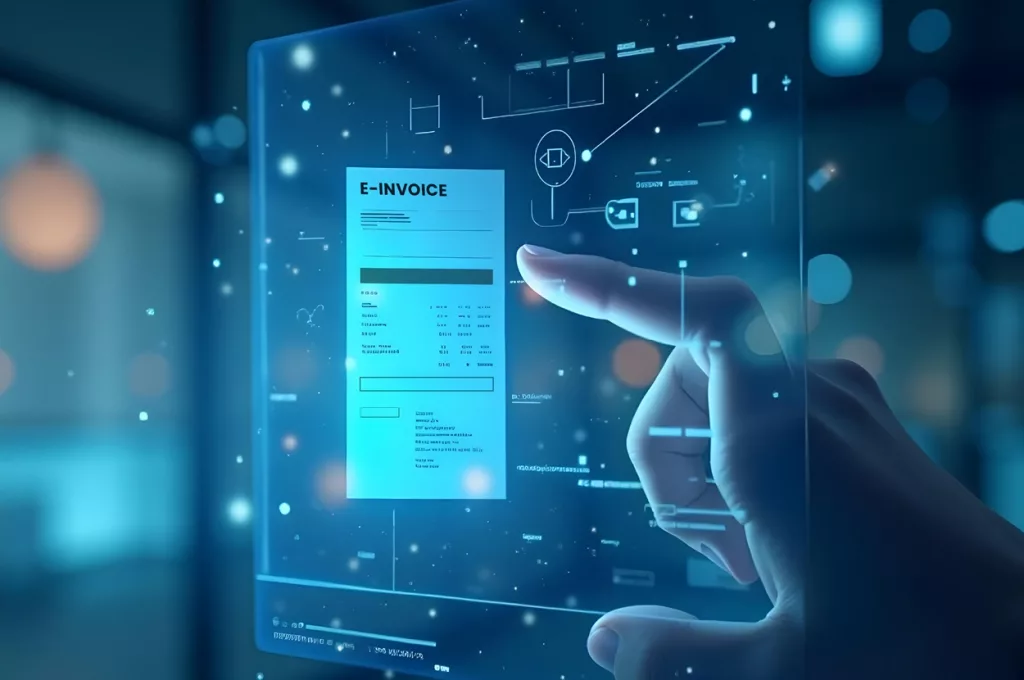As India advances toward a digitally governed tax environment, GST e-invoicing compliance has become a non-negotiable priority for enterprises. With the government steadily lowering thresholds and expanding scope, businesses must ensure they are fully aligned with the latest GST e-invoicing compliances in India for 2025. Many enterprises nowadays rely on a dedicated e-invoicing solution to simplify reporting and avoid last-minute rejections.
E-invoice is compulsory for businesses having a turnover of more than Rs. 5 Cr in any preceding financial year. It has further added a 30-day IRP reporting window for generating and E-invoice from the date of invoice. . Below are some important points to be kept in your mind to know the applicability to your business and for timely compliance of E-invoice.
2025: What changed and why it matters
- E-invoice is applicable to the entities whose aggregate turnover in preceding any FY exceeds Rs. 5 Cr. subject to other conditions. . This aggregate turnover limit was brought down to Rs. 5 Cr from 1st August 2023 onwards. E-invoicing applies from the financial year succeeding the FY in which the turnover exceeded the threshold limit. For example, if the AATO exceeds the threshold limit anytime in FY 2023-24, then the e-invoicing shall be applicable from FY 204-25. (https://gstcouncil.gov.in/node/4365)
- Time limit to report to IRP: From 1 April 2025, taxpayers with AATO ≥ ₹10 crore must report invoices/credit notes/debit notes within 30 days of document date; IRP will block older documents. Plan your cut-offs and weekend/public-holiday contingencies Generation of an E-invoice gives an invoice a digital authentication by the government and also provides an Unique Invoice Reference Number (IRN) and QR code which altogether gives a legal validity to an invoice. einvoice1.gst.gov.in
- A timely generation of an E-invoice matters most to the recipient, as ITC cannot be availed without an E-invoice.
Eligibility & Scope: Does Your Business Need to Comply?
Before diving into technical readiness, confirm whether your business falls under the GST e-invoice compliance in India.
Who must comply:
- Businesses with an aggregate annual turnover of ₹5 crore or more in any preceding financial year from the financial years 2017–18.
- Applies to B2B, B2G, and export invoices.
- Entities issuing invoices, credit or debit notes related to B2B transactions.
- Check eligibility at the PAN level so no branch or GSTIN is missed.
Who is exempt:
- SEZ units (not developers)
- Insurers, banks, NBFCs
- Goods Transport Agencies (GTAs)
- Passenger transport and cinema ticket suppliers
If your enterprise meets the threshold, compliance isn’t optional. The GST Network (GSTN) and the Government can automatically track turnover data from past filings to identify eligible taxpayers, so proactive registration is crucial.
Technical preparation: IRP + ERP done right
Register & connect
- Complete one-time registration on the Invoice Registration Portal (IRP) and set up API credentials or connect via your ASP/GSP.
- Ensure your ERP/billing can produce JSON in the GST INV-01 schema and transmit to IRP reliably (batch + real-time).
QR code & IRN handling
- A valid e-invoice must carry the Unique IRN and embedded QR code.
- The QR must contain key fields such as supplier/recipient GSTINs, invoice number/date, value, main HSN, line-item count, and IRN details. Print the QR on the invoice; placing it on a separate sheet is not permitted.
E-Way Bill & returns sync
- Where required, link e-Way Bill data; e-Invoicing data from the IRP automatically flows to GSTN, helping registered persons to auto-populate PART A of e-way bill, and GSTR-1, reducing manual work and mismatch risk.
Practical tip: Build automated retries, schema validation, and duplicate checks into your integration so a temporary IRP outage or field-level error doesn’t snowball into Days Sales Outstanding (DSO) issues.
Process alignment & training (people + policy)
Your workflows and people need an upgrade too. Shift from paper pushes to digital handoffs, especially with cancellations now capped at 24 hours post-IRN.
- Timing discipline: For AATO ≥ ₹10 crore, schedule invoice generation so the team never misses the 30-day limit. Plan around holidays and month-end peaks.
- Cancellations: An IRN can be cancelled only within 24 hours on the IRP. After that, the correction must be made through a credit or debit note and to be reflected in GSTR-1.
- Signatures: The IRP’s digital signature authenticates the invoice; adding your own PDF signature is optional and policy-driven.
- Data governance: Keep GSTIN, address, HSN/SAC, and rate masters accurate. Apply maker-checker control and number sequence locks to prevent duplication.
- Run mock cycles where teams create, send, cancel, and link e-Way Bills for a batch of test invoices to build confidence.
The 2025 GST e-invoicing checklist
1. Eligibility & registration
☐ Turnover > ₹5 cr verified (any FY since 2017-18)
☐ IRP registration completed; API/ASP-GSP connection tested
☐ Multi-GSTIN enablement done (PAN-level governance defined)
2. ERP & integration
☐ JSON output matches GST INV-01 (mandatory fields present)
☐ Duplicate/sequence controls & error handling in place
☐ Auto-retry + alerting for IRP/API failures
3. Document controls
☐ IRN generated before dispatch/payment
☐ QR code (with IRN) printed on invoice (not on a separate sheet)
☐ e-Way Bill linked where applicable (Part-A/Part-B handling)
☐ IRP-signed JSON archived safely (follow your records retention policy)
Effective from 01-06-2025, , the invoice number shall be treated as case-insensitive in IRP to avoid document duplication and ensure accuracy. This means any alphabet, if used in the invoice number, shall be converted into uppercase before the generation of the IRN.
4. Timelines & reversals
☐ 30-day reporting SLA enforced for AATO ≥ ₹10 cr
☐ 24-hour IRN cancellation SOP trained and tested
☐ Post-cancellation flow: substitute invoice (with nullifying CN or DN) + GSTR-1 updates
5. Governance & audit
☐ Monthly self-audit of sample invoices/GSTR-1/2B reconciliation
☐ Exception register for rejects, duplicates, late-reported docs
☐ Vendor/customer communication template for e-invoice issues.
Staying Ahead: Automate, Monitor, and Review
As e-invoicing continues to evolve, staying compliant requires continuous monitoring and system adaptability. Enterprises should:
- Review GSTN notifications regularly for schema or threshold updates.
- Integrate AI-based reconciliation tools to match e-Invoices with GSTR-1 and GSTR-2B data.
- Set up automated alerts for failed or duplicate IRN submissions.
- Partner with a reliable e-invoicing platform that offers 24×7 support, multi-GSTIN management, and audit-ready dashboards.
Conclusion: From Compliance to Confidence
Lock In Compliance, Unlock Growth. e-Invoicing in India is more than a regulatory obligation—it’s a gateway to smarter, transparent business operations. In Summary, By following GST e-invoicing checklist, enterprises can reduce risk of missing compliance, prevent reporting delays, and maintain end-to-end tax visibility.
Whether you’re implementing the first time or upgrading existing systems, now is the time to automate. Explore how Cygnet.One’s e-Invoicing solution helps enterprises manage compliance effortlessly, turning complex mandates into streamlined, future-ready workflows.
Eager for hands-on help? Dive into our e-invoicing automation demo. Drop a line, let’s chat compliance over coffee.









